Dee Estuary Birding
Monthly Newsletter...
May 2023 Newsletter
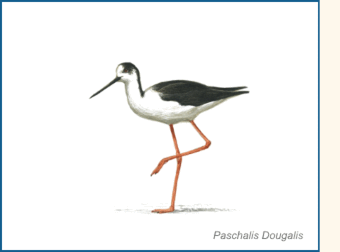
Dee Estuary Little Terns
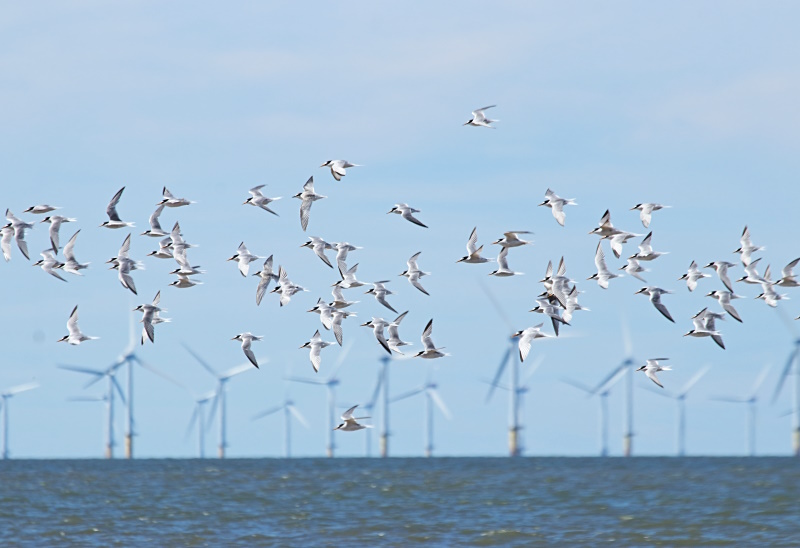
With the first Little Terns having already arrived back from their wintering grounds this spring it's time to review the 2022 season, and what a good one it was. The graph below tells the story.
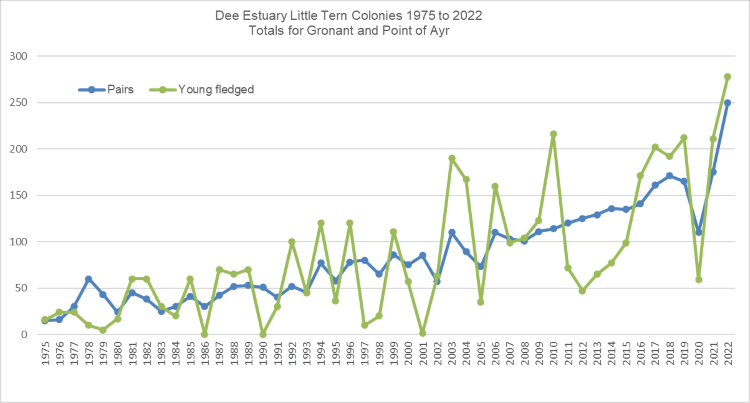
Taking account that 2021 was one of our best ever seasons, to see a 43% increase in the number of pairs breeding and a 32% increase in the number of young fledged the following year is just incredible. Both are record highs for the Dee Estuary Little Terns with 250 pairs in 2022 beating the 2021 record of 175 and 278 young fledged in 2022 beating the 2010 high of 216. The high number of pairs in 2022 was presumably a result of good winter survival together with a great run of good breeding seasons producing plenty of Little Terns, 2020 excepted.
The numbers on the graph above are the total for
both the Dee Estuary colonies, which are at Gronant and Point of Ayr
(POA). But the POA colony only really became established in 2020 when
storms in early June wiped out 70% of the nests at Gronant which
resulted in 21 pairs relocating and building nests at POA. Although
still much smaller than Gronant the POA colony made a very important
contribution in 2022 with 39 pairs producing 69 fledglings, as shown in
the table below which compares breeding success from 2019 to 2022.
| Year |
Gronant |
POA |
||
| Pairs |
Fledglings |
Pairs |
Fledglings |
|
| 2019 |
162 |
206 |
3 |
6 |
| 2020 |
89 |
31 |
21 |
28 |
| 2021 |
163 |
201 |
12 |
10 |
| 2022 |
211 |
209 |
39 |
69 |
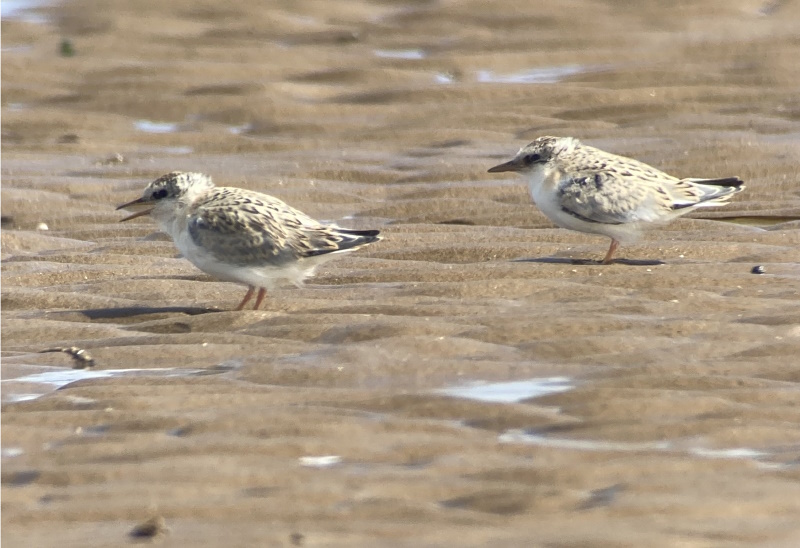

I was wardening at Gronant in 2001 and remember well the huge disappointment, near despair, when we realised that not a single chick had survived the breeding season. A result of a pair of determined Kestrels and problems with the electric fence which meant foxes had got into the pens on a couple of nights. Thankfully, that year was the exception rather than the rule and Gronant, over the years, is probably the most productive colony in the United Kingdom. The graph above demonstrates this nicely, showing the fledglings per pair (i.e. the productivity of the colony) since 1975. Despite the poor 2020 season the five year average currently stands at 1.1, well above the magic number of 0.74 which Cook & Robinson (see Ref 2) calculated is the number of fledglings per pair which is required to sustain numbers of Little Terns in a colony. Less than 0.74 and numbers will drop, above 0.74 and numbers will increase. Remarkably, in the 47 years the colony (including POA since 2019) has been wardened the five year average of fledglings per pair has dropped below 0.74 only three times. No wonder numbers are increasing!
The number of chicks successfully fledged can vary greatly from year to year, of course, with the weather, high tides, disturbance and predation all having a part to play. 2022 was very successful because of good weather throughout the season, very few nests were lost to high tides and the wardening team, including volunteers (see below), did a great job of keeping disturbance and predation at low levels.
The good weather meant that the Dee Estuary wasn't
the only site to have a bumper season. I've seen reports of a very good
breeding season come from across the British Isles including Chesil
Beach in Dorset, Hodbarrow in Cumbria, Long Nanny in Northumberland and
Sands of Forvie on the east coast of Scotland. Across the Irish Sea, at
the Kilcoole colony near Wicklow, they had at least 255 active nests
and 431 chicks by early July. But it was at Winterton NNR, on the east
coast of Norfolk, that had the biggest colony in 2022 with at least 300
active nests producing a minimum of 585 fledglings (counted on July
14th) with a possible total of a massive 700 for the season! All this
bodes well for the future of Little Terns.
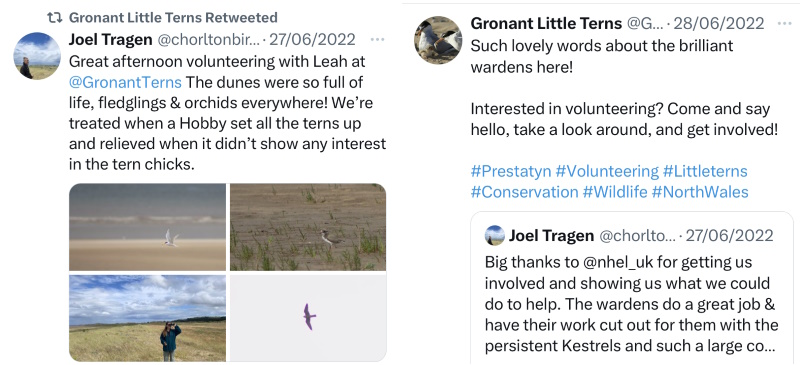
You can keep in touch with what is going on at
Gronant via Twitter: https://twitter.com/GronantTerns
@GronantTerns.
Voluntary Wardens Wanted
I quote from the "Becoming a Little Tern Volunteer Warden" document published by Denbighshire County Council a few years ago:
We rely on our
volunteers, and without you the colony would not be as successful as it
has been in recent years. Because of the work of our on-site wardens,
the Little Tern colony at Gronant became the largest colony in the UK.
This is in itself a testament to the hard work that has been done
inrecent years and it has become a privilege to be involved in such a
wonderful project.
You have a choice of volunteering either at Gronant or POA, or both. Wardening starts around mid-May and will go on until late July. The hours can be pretty flexible but you would have to discuss that with the relevant wardening team. I used to do one day a week and was at Gronant for four to six hours on my allocated day. Feel free just to turn up at either colony and have a chat to the wardens on duty to see what is involved. Downloading this PDF file is a good place to start - Becoming a Little Tern Warden.pdf.
Here are some details about Gronant:Contact the North Wales Little Tern Group by emailing nwlittletern@gmail.com. I quote from their website (https://northwaleslittleterns.weebly.com/howyoucanhelp.html ):
"The way you can help the birds whenever you are free, please consider heading down to the Gronant dunes and the wardens will always have something for you to help with. Volunteers play a crucial role in supporting the staff wardens as it is a large site with lots happening. If you can volunteer at Gronant Dunes this season, please let us know by emailing nwlittletern@gmail.com."
For Point of Ayr contact the RSPB, see:
https://volunteer.rspb.org.uk/opportunities/44308-species-protection-little-tern-engagement-officer-species-protection-2023-03-01
or you could call in to the visitor centre at RSPB Burton Mere Wetlands and tell the wardens there that you want to volunteer at POA.
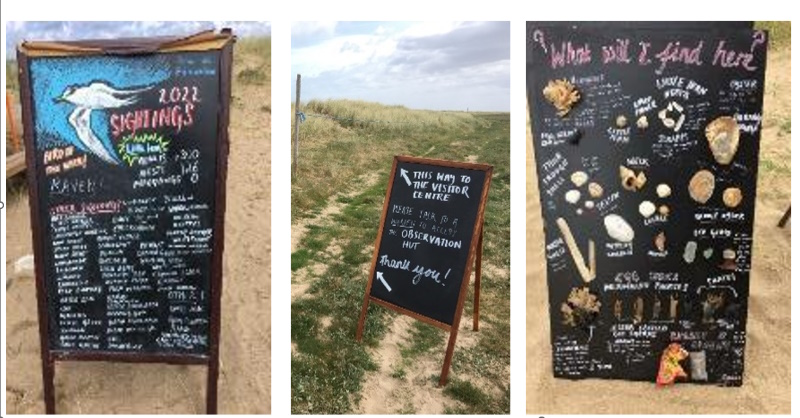
The 2022 Boards at Gronant - sightings, guidance for visitors and an identification board.
References.
1. Charlotte Andrews, Josh Case & Natalie Lewis, 2022 Little Tern
Report, Denbighshire Countryside Services.2. Cook, A.S.C.P. and Robinson, R.A., 2010. How Representative is the Current Monitoring of Breeding Seabirds in the UK? BTO Research Report No. 573. BTO, Thetford, Norfolk, UK.
Richard Smith.
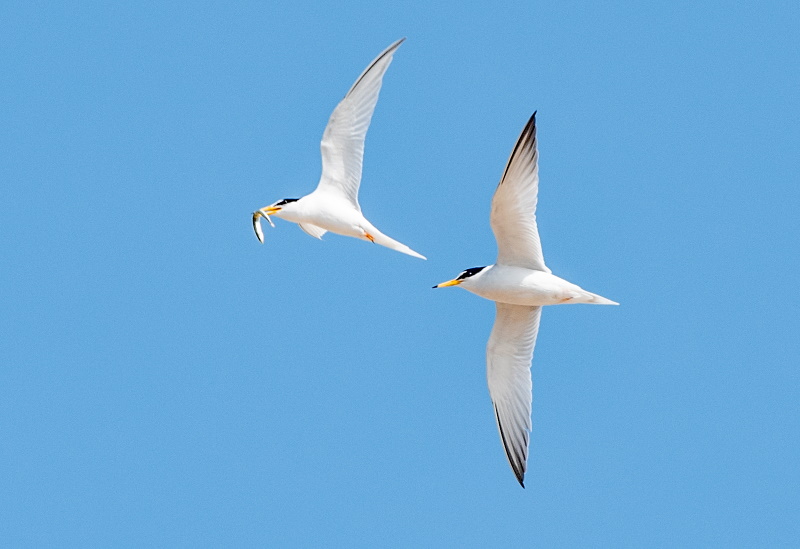
Colour Ring Report
Knots
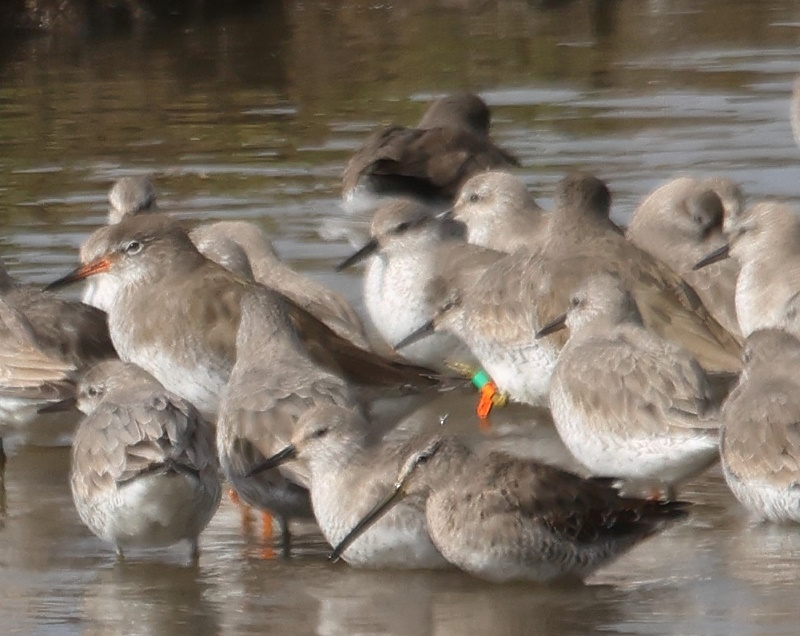
Orange Flag 24C/Green ring
Ringed at Hoylake on 25/11/2022.
Recorded at Thurstaston on 17/01/2023 and Burton Mere Wetlands on
01/04/2023.
Knot are unusual at Burton Mere Wetlands but
occasionally a flock roosts there, usually in Spring and such was the
case on April 1st when Oflag 24C was spotted, the first colour-ringed
Knot recorded at this site.
Orange Flag
TUA/Pale blue ring
Ringed at Ynyslas (Cardigan Bay) on 15/09/2022.
Recorded at Thurstaston in January 2023.
In April it was seen at Formby on the 7th and the next day, 8th, at
Oakenholt (RSPB).
This is the first colour-ringed Knot recorded at
Oakenholt.
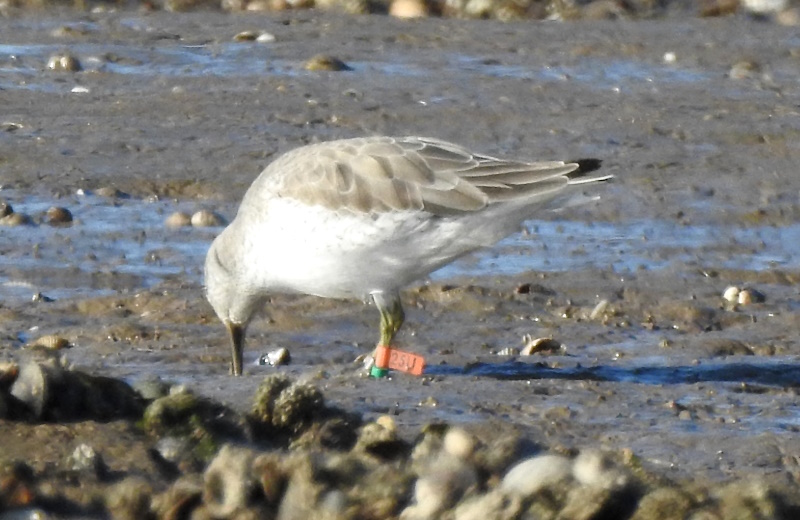
Orange flag 25U/Green ring
Ringed at Formby on 21/04/2023.
Recorded at Thurstaston on 25/04/2023.
Six Orange flagged Knots were recorded at Thurstaston on April 25th,
all had been ringed at Formby four days earlier. These were part of a
large flock of 4,000 which visited us for a few days at the end of
April to feed up here before their long journey across the Atlantic to
breed in northern Canada.
Black-tailed Godwits

Green ring - Orange
Flag (AA)
Ringed on Maltraeth Estuary (Anglesey) on 29/1/2022.
Recorded at Burton Mere Wetlands on 13/04/2023.
Amazingly, this is the first Black-tailed Godwit
ever to be colour ringed on the west coast of mainland Britain!
Hundreds have been colour ringed in this country, of course, but all on
the east and south coasts, and also in Ireland. This is a new scheme
and we hope many more will be fitted with these Orange flags over the
coming years.

L - L (L/L-L)
This
Black-tailed Godwit originally had three Lime green rings but has lost
the one which was on the left tarsus.
Ringed in southern Iceland on 17/06/2003 as a chick, it will be 20
years old this June!
Over it's 20 years it has been recorded 285 times. First seen on the
Dee Estuary in September 2005 it has returned every year since with
most records on Thurstaston Shore (feeding) and Caldy Wildfowl
Collection (roosting). In March 2022 it was recorded on the Ribble
Estuary, then it was not seen for a year and we thought we wouldn't see
it again, but then it turned up on Frodsham Marsh in March 2023, and at
Caldy from 18/04/2023 to 24/04/2023.
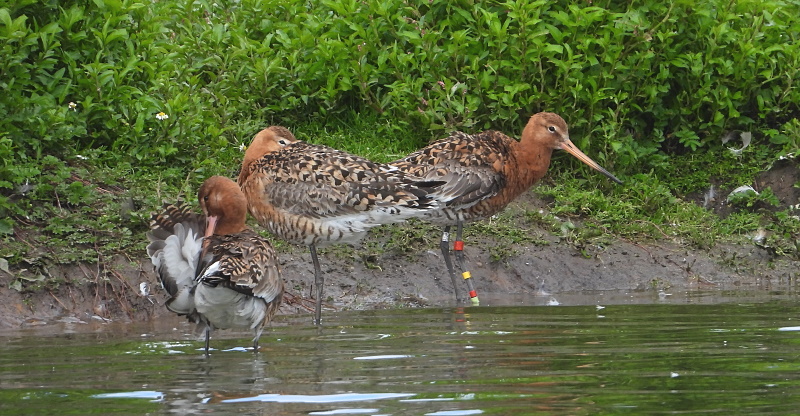
Ringed in north-west Spain (Pontevedra) on 23/12/2019.
Recorded at Woolston Eyes (Cheshire) in late June in 2020 it then
turned up at Caldy Wildfowl Collection the following month and stayed
until mid-August 2020, after which it was at Connnah's Quay. October
2020 saw it back in north-west Spain.
The next record was in January 2022 at Marshside (Southport), it was
then seen at both Oakenholt RSPB and Caldy the following August, and
again at Oakenholt on 08/04/2023.
Shelduck
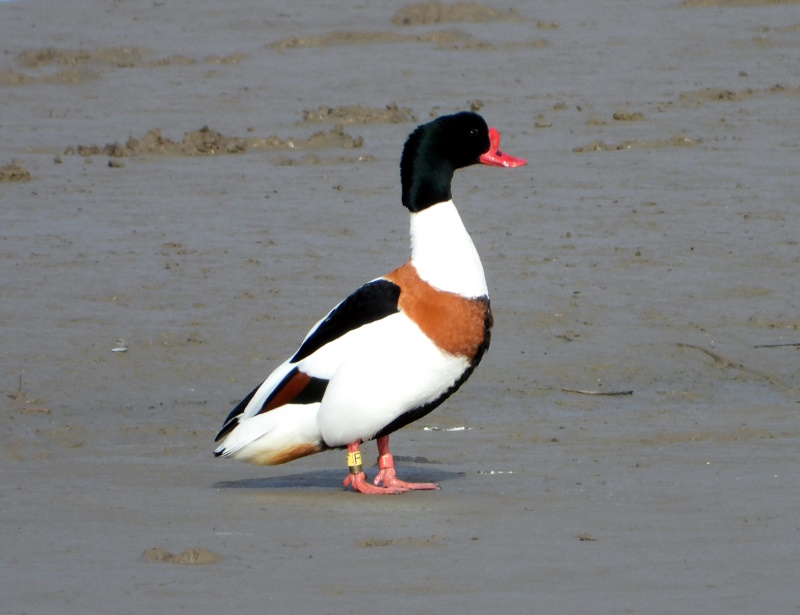
Red T - Yellow F.
Ringed at Lower Derwent Valley NNR (Yorkshire) in November 2020.
Recorded at Meols in March 2021 and on 14/04/2023.
Twites
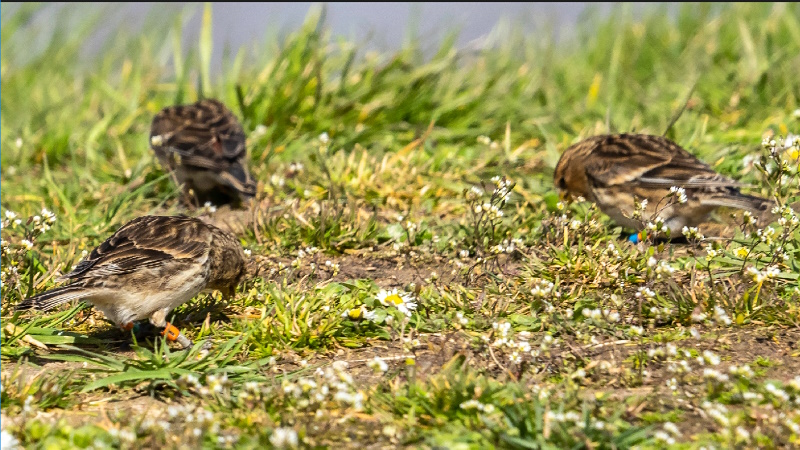
OG - Om
On 23/03/2023 Jeff Cohen managed to photograph three colour-ringed
Twite, but we've only managed to get information on the one on the left
in the above photo.
Ringed at Connah's Quay Nature Reserve in January 2022.
Recorded at Flint Castle on 23/03/2023.
Colour Rings were recorded by Richard Smith, Stephen
Hinde, Alan Hitchmough, Tony Ormond, Richard Speechley, Alex
Jones, Jeff Cohen, Peter Haslem and Carole Killikelly.
Richard Smith
April Bird News
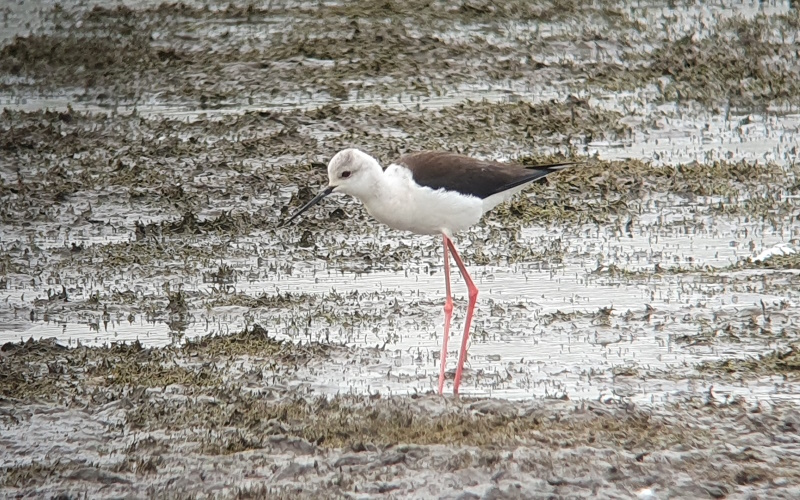
A great month and with so much going on I can only give you brief highlights. I'll start with the rarities:
The Long-billed Dowitcher which turned up at Burton
Mere Wetlands in March (and probably the same one seen a couple of
times last winter) was recorded on several dates through April.
A Savi's Warbler was first heard, then seen at
Burton Mere Wetlands on the 10th and the following four days. This is
only the third record for the Dee Estuary area with one at Red Rocks in
May 1993 and one on Moreton Common in May 1994.
A Green-winged Teal was spotted in the channel at Heswall Shore on the 14th, 23rd and 29th.
A Gull-billed Tern was at Burton Mere Wetlands on the 19th and 20th, although somewhat elusive at times. The last one we had was on Thurstaston Shore in July 2019 which gave good views for several days.
A Black Guillemot was seen well off Meols on the 19th for a short while, with more distant views on the 22nd and 23rd.
Blue-headed Wagtails are the continental race of Yellow Wagtails and rare on the west coast of Great Britain, less than annual in our area. So to get four records this month was exceptional. One was at Gronant on the 23rd with another there on the 30th. The other two were both seen on the 25th with one at Leasowe Lighthouse and the other at Burton Mere Wetlands.
Burton Mere Wetlands' good streak continued with
the arrival of a Black-winged Stilt on the 27th. Good views were had
from Marsh Covert Hide for an all too short time before it flew over
the main scrape and not relocated.
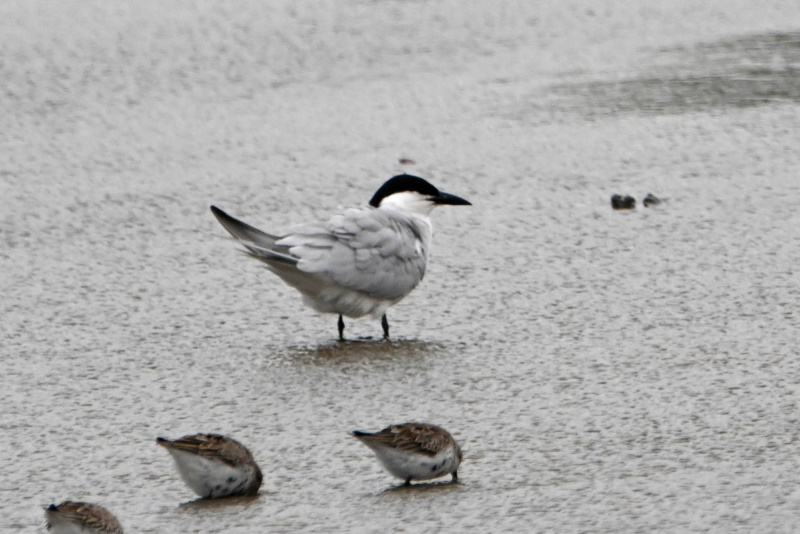
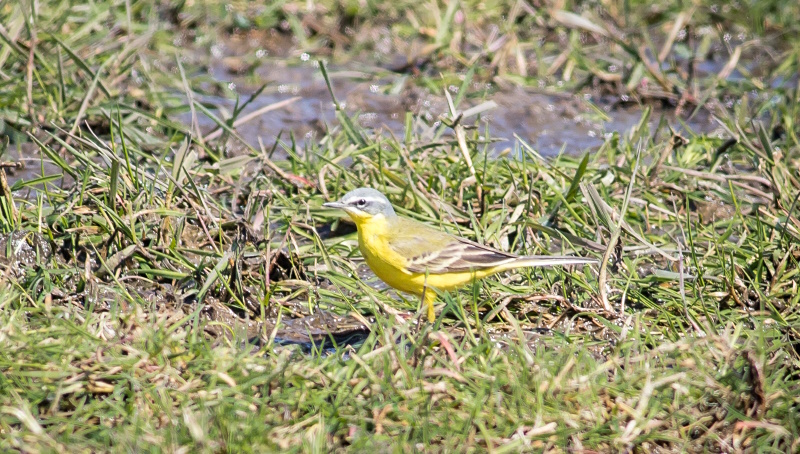
The table below shows the first arrivals of a
selection of spring migrants, in April we had an early Swift but
otherwise the arrival dates were fairly typical.
| Species | 2023 | Location | 2022 | 2021 |
|---|---|---|---|---|
| Sand Martin | 15th March |
Gronant | 11th March | 5th March |
| Wheatear | 17th March |
Burton/Little Eye | 9th March |
28th Feb |
| White Wagtail |
17th March | Leasowe | 12th March |
16th March |
| Swallow | 24th March | Leasowe | 15th March | 18th March |
| Willow Warbler |
25th March |
Burton | 29th March |
23rd March |
| House Martin |
1st April | Burton Mere Wetlands | 23rd March | 27th March |
| Swift | 5th April |
GreenField Dock | 28th April | 16th April |
| Whitethroat | 10th April | Decca Pools | 10th April | 10th April |
| Cuckoo | 24th April | Leasowe | 21st April | 24th April |

There were a lot of birds arriving, passing through and leaving.
Pink-footed Geese were seen heading north on several mornings but on
the 17th 8,000 were counted from Hilbre - a wonderful sight. 10 Ospreys
were recorded flying over this month, making a good total of 16 so far
this spring.
Out to sea 68 Little Gulls on the 1st was the peak
of their passage, some fresh winds on the 12th brought in 70 Manx
Shearwaters and 180 Gannets recorded from Hilbre, also the first Little
Tern of the year was seen on the same date.
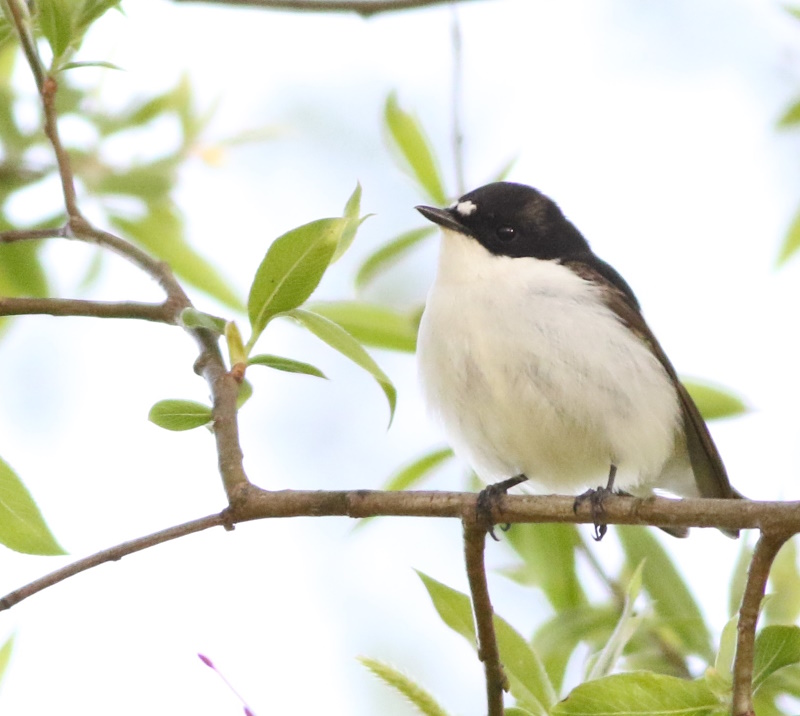
A total of four Pied Flycatchers was a good total, they are quite
scarce here on the coast. Good numbers of migrants including at least
100 Willow Warblers on Hilbre on the 18th and over 100 Wheatears in
North Wirral on the 22nd. The first Hobbies arrived on the 29th, with
one at Lower Heswall and another over Saughall.
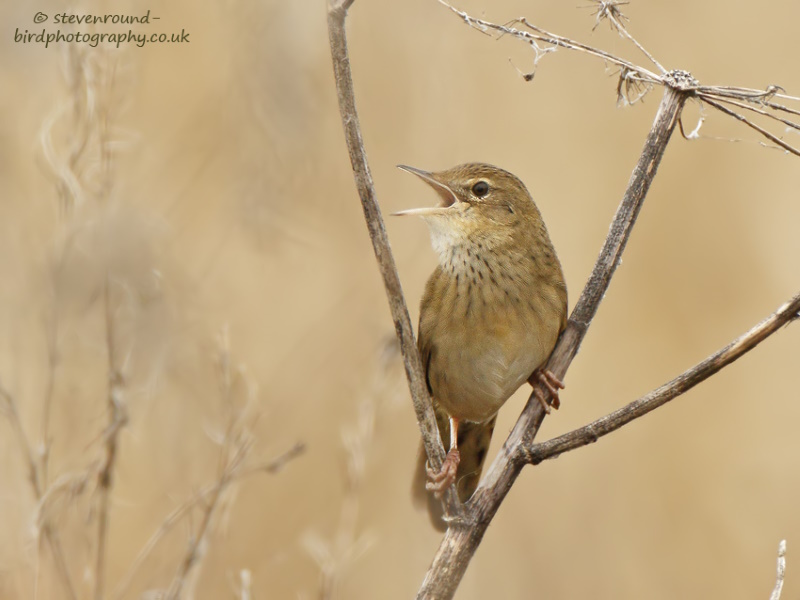

I always make a point of looking out for two species in particular in
April, Whimbrels and White Wagtails. Whimbrels are seen here in April
and early May when most of our other waders have already left, filling
the estuary with their whistling calls. The area between West Kirby and
Heswall is always a good place to see them and the one below was
skulking around on the rocks just south of the Dee Sailing Club
causeway. They are traveling up from West Africa and nearly all the
ones which stage here will be on their way to Iceland to breed, peak
numbers in April was 107 during high tide at Heswall on the 25th.
White Wagtails are the continental race of Pied
Wagtails. These are moving up from Spain and France where they have
spent the winter, they pass through the UK on their way to Iceland to
breed. I caught the peak of their migration this year on Hoylake shore
with 25 on the 16th. I looked at those birds in amazement, how can such
a delicate looking bird possibly cross the Atlantic all the way to
Iceland?? But they obviously do and very successfully!
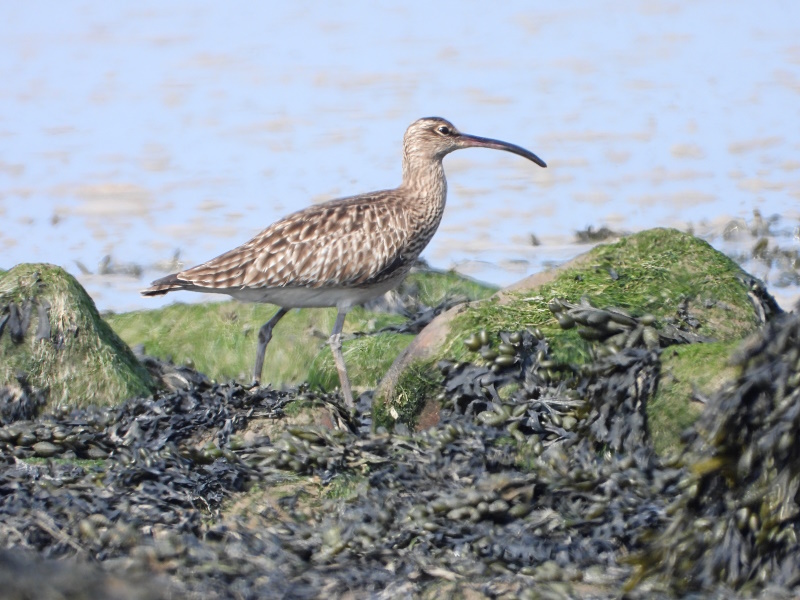
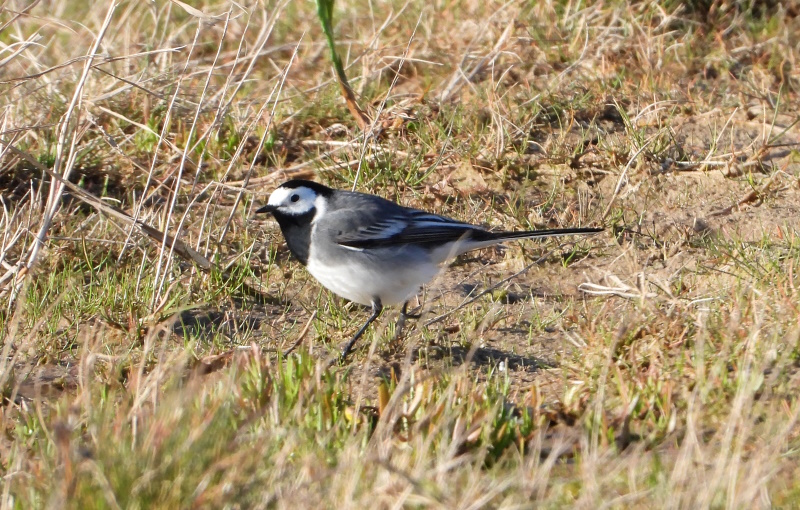
What to expect in May
The spring migration will still be in full swing in
May. See my 'Three
Magical Days in Spring' article', written in 2012 it includes a
description of the birds counted on Hilbre on May 2nd that year - the
highlights being 200+ Wheatears and 800 Willow Warblers, an incredible
fall.
Other than the possibility of large numbers of
Wheatears and Willow Warblers the passage of both Spotted Flycatchers
and Whinchats peak in May, on May 9th 2021 we had 20 Whinchats in the
Leasowe Lighthouse area.
Many waders will have already left but there will be
plenty more coming through including Whimbrels on their way from West
Africa to Iceland, and we had record numbers of these at Heswall last
year - 211 on the 5th. Both Dunlin and many Ringed Plovers will be
using the same route as the Whimbrels, although the flocks will be
passing through quickly. Look closely at the Dunlin flocks and you
could find something much rarer. Curlew Sandpipers are far less common
in spring than autumn but we usually see one or two, and in full
breeding plumage. Dotterels have been recorded in May and all the
Broad-billed Sandpiper records for Cheshire and Wirral have been this
month, last one at Hoylake in 2011.
One or two Ospreys will still be flying over on
their way north, and we will see a few Hobbies. It's worth looking
out to sea if we get strong west winds which could well bring in large
numbers of Gannets and Manx Shearwaters flying along the Liverpool Bay
coast.
Forthcoming Events
May Highest Spring Tides (Liverpool)
Also see Tides page.
6th May, 12.19hrs (BST), 9.2m.
7th May, 12.56hrs (BST), 9.2m.
19th May, 11.41hrs (BST), 9.3m.
20th May, 12.21hrs (BST), 9.2m.
Forthcoming Events
Also see events at https://events.rspb.org.uk/deeestuary